Pinnacle Home Improvements provides top-notch home improvement services. We are widely considered a top roofing contractor, and we specialize in metal roofs. As such, we know just about all there is to know about maintaining metal roofing.
Metal roof care is incredibly important for homeowners to know. This blog post offers expert tips on how to effectively maintain your metal roof to ensure its longevity and optimal performance. Keep reading to learn about common issues, preventive measures, and essential maintenance tasks to keep your metal roof in excellent condition. Metal roof upkeep isn’t difficult when you have Pinnacle Home Improvements by your side!
Complete Guide to Metal Roof Maintenance: Essential Tips for Longevity
Metal roofs have become a favored choice for homeowners due to their durability, long lifespan, and energy efficiency. These types of roofs can withstand a wide range of weather conditions and often come with significant warranties. Their reflective properties can result in lower energy costs by keeping homes cooler in the summer. Moreover, metal roofs are celebrated for their environmental benefits, as many are made from recycled materials and are fully recyclable at the end of their life.
Maintaining a metal roof is critical to ensuring it lasts its full potential lifespan, which can be upwards of 50 years or more with proper care. Routine maintenance tasks involve inspecting for and addressing any signs of wear and tear, such as the seal on fasteners, seams between panels, and making sure there is no accumulation of debris which can retain moisture and cause damage. Although metal roofs require less maintenance compared to other roofing materials, neglecting these tasks can shorten the roof’s lifespan and nullify warranty agreements.
In navigating the maintenance of metal roofing, it’s important to have a clear understanding of the procedures and precautions necessary to preserve the roof’s integrity. Homeowners should be aware of the specific needs of their roofing material—be it aluminum, steel, copper, or another metal—as different materials may require different care. Professionals should be consulted for more complex maintenance tasks to avoid injury or accidental damage to the roof. Regular maintenance not only protects the homeowner’s investment but also ensures the roof continues to provide the performance and aesthetic appeal it was chosen for.
Maintenance and Inspection
Proper maintenance and inspection of metal roofs are critical to ensuring their longevity and performance. They require regular check-ups and a systematic approach to upkeep.
Routine Maintenance Strategies
Regular Debris Removal: Debris like leaves and branches can accumulate on metal roofs. They should be removed to prevent moisture retention and corrosion. One should use a soft brush or a leaf blower for this task; avoid hard tools that may scratch the roofing material.
Gutter Cleaning: Gutters should be cleaned biannually to prevent clogs, which can cause water to pool and damage the roof structure.
- Spring: To remove debris accumulated over winter.
- Fall: To clear leaves and twigs dropped during autumn.
Wash the Roof: Metal roofs should be washed with a mild detergent solution to remove dirt and environmental contaminants, such as:
| Frequency | Dilution Ratio |
| Annually | 1/4 cup detergent to 5 gallons water |
Preventative Coating: Depending on the type of metal and the manufacturer’s instructions, a protective coating may be applied to the metal surface to enhance resistance to rust and degradation.
Inspection Guidelines
Scheduled Visual Inspections: Metal roofs should be inspected at least twice a year, typically during gutter cleaning intervals. Look for:
- Signs of rust or corrosion.
- Loose or damaged panels.
- Seams or edges that have become unsealed.
Professional Assessments: It is advisable to have a professional roofer inspect the roof every few years. They can identify issues that may not be visible to the untrained eye.
Safety Precautions: When performing maintenance and inspections, safety must be the top priority. Adhering to the following precautions is non-negotiable:
- Use a safety harness.
- Work with a buddy system.
- Employ non-slip footwear.
- Utilize ladders correctly and safely.
Following these strategies and guidelines will help preserve the integrity of a metal roof, maximizing its lifespan and ensuring that it remains an efficient protector of the property.
Managing Wear and Tear
Metal roofs are valued for their durability and longevity, but they require regular maintenance to deal with common issues such as rust, corrosion, and panel damage. Proper management of these elements ensures the roof maintains its integrity over time.
Rust and Corrosion Management
To effectively control rust and corrosion, owners should regularly inspect their metal roof for any signs of these problems. Prompt action is crucial when rust is detected.
- Inspection: At least twice a year, one should conduct a thorough inspection, focusing on areas prone to water accumulation.
- Cleaning: Using a solution of water and a non-abrasive cleaner, gently clean the affected areas to remove corrosive substances.
- Prevention: To prevent future issues, apply a zinc or iron phosphate solution to inhibit rust formation.
- Coating:
- Apply a rust-inhibiting primer.
- Follow up with a 100% acrylic latex topcoat for added protection.
Panel Repair and Replacement
Handling damaged or loose panels necessitates a precise approach to ensure the roof’s integrity is not compromised.
- Assessment: One must first assess the extent of damage to determine if a repair or full replacement is needed.
- Minor dents or scratches might be repairable.
- Severe damage often requires replacing the entire panel.
- Repair:
- For minor issues, use a sealant approved for metal roofing to patch small areas.
- Secure any loose fasteners or replace them if they are corroded.
- Replacement:
- Remove the damaged panel using appropriate tools.
- Replace it with a new panel that matches the existing roof material and profile.
- Ensure that the new panel is securely fastened and properly sealed.
Enhancement and Protection
Proper enhancement and protection of metal roofs involve regular gutter care and the application of specific coatings and paints. These measures safeguard the roof’s integrity and prolong its lifespan.
Gutter Care
Gutters are crucial for water management on metal roofs. They prevent water accumulation by channeling it away from the roof structure. One should inspect gutters seasonally and remove debris such as leaves, branches, and dirt to ensure proper flow. Effective gutter maintenance includes:
- Checking for blockages in the downspouts.
- Ensuring hangers and brackets are secure.
- Looking for rust or corrosion, which may indicate a need for repair or replacement.
| Gutter Maintenance Task | Frequency | Notes |
| Debris Removal | Quarterly | More often if located under trees. |
| Inspection | Biannually | After heavy storms or winds. |
| Repairs | As needed | When signs of wear or damage appear. |
Coating and Painting Solutions
The application of coatings and paints is essential for protecting metal roofs from the elements. These treatments can prevent rust, corrosion, and UV damage, while also enhancing the roof’s aesthetic appeal. When selecting a coating or paint, consider:
- Acrylic, silicone, or polyurethane-based products for their reflective properties and durability.
- Compatibility with the metal type to ensure proper adhesion and protection.
- Energy-efficient coatings that can lower cooling costs by reflecting sunlight.
Coating and Painting Checklist:
- Ensure the roof surface is clean and dry before application.
- Use a primer designed for metal roofs if necessary.
- Apply coatings and paints during suitable weather conditions, avoiding extreme temperatures or humidity.
Safety First
When maintaining a metal roof, it is imperative to prioritize safety to prevent accidents and ensure a secure working environment. Individuals should abide by the following safety guidelines:
Appropriate Gear: Wear non-slip footwear to reduce the risk of slips and falls. A safety harness is recommended when working on steep or high roofs.
Ladder Safety: Utilize a sturdy ladder that reaches beyond the roof’s edge and secure it properly before ascending. Ensure the ladder feet are on a stable and level surface.
Awareness of Surroundings: Be mindful of potential hazards such as overhead power lines, environmental conditions, and wildlife that can pose risks.
Buddy System: Never work alone. Having a partner ensures immediate assistance in case of an emergency.
Tools and Equipment: Keep tools securely attached with lanyards to prevent them from falling and causing injury or damage.
The following table summarizes key precautions:
| Safety Aspect | Precaution |
| Footwear | Non-slip soles |
| Fall Prevention | Safety harness |
| Ladder Use | Exceeds edge height, secure placement |
| Environmental Awareness | Mindful of power lines, weather, animals |
| Workforce | Minimum of two persons |
| Tool Management | Attach tools with lanyards |
Adhering to these protocols will significantly reduce the likelihood of accidents, establishing a secure foundation for all maintenance tasks on a metal roof. If you’d like help with these maintenance tasks, remember that Pinnacle Home Improvements is always here to help.







